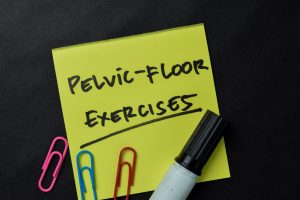
For some, having an overactive bladder is a nuisance. For others, it can have a massive impact on their quality of life. An uncontrollable urge to go can lead to incontinence, potentially leading people to explore surgical options.
But nobody wants to go under the knife. One way to help gain some control over the urges to urinate is bladder training. It involves learning to go to the bathroom on a schedule and performing pelvic muscle exercises.
Here are the components of a bladder training plan:
Start and Keep a Diary: Track how many times you urinate or leak urine for two or three days.
Identify Patterns: Look at your diary to determine how much time generally passes between your daily bathroom visits.
Select Intervals: Based on how frequently you were going to the bathroom to urinate, set an interval that extends it by 15 minutes. For example, if you were going every 45 minutes, set your intervals at one hour.
Hold It: On the day you start bladder training, go to the bathroom first thing in the morning and empty your bladder, then do not go again until you’ve reached your interval. If the interval hits before you have to go again, go anyways. If the urge hits before, remember your bladder is not full and use techniques to help you avoid going.
These techniques may include pelvic floor exercises, like Kegels, or distractions.
Extend Intervals: Once you’ve mastered going to the bathroom on your intervals, try to extend it by another 15 minutes. As the weeks and months pass, you may notice you can wait much longer with less urge. Continue to review your journal and compare results to provide reinforcement, while also scheduling periods for Kegel exercises during the day.